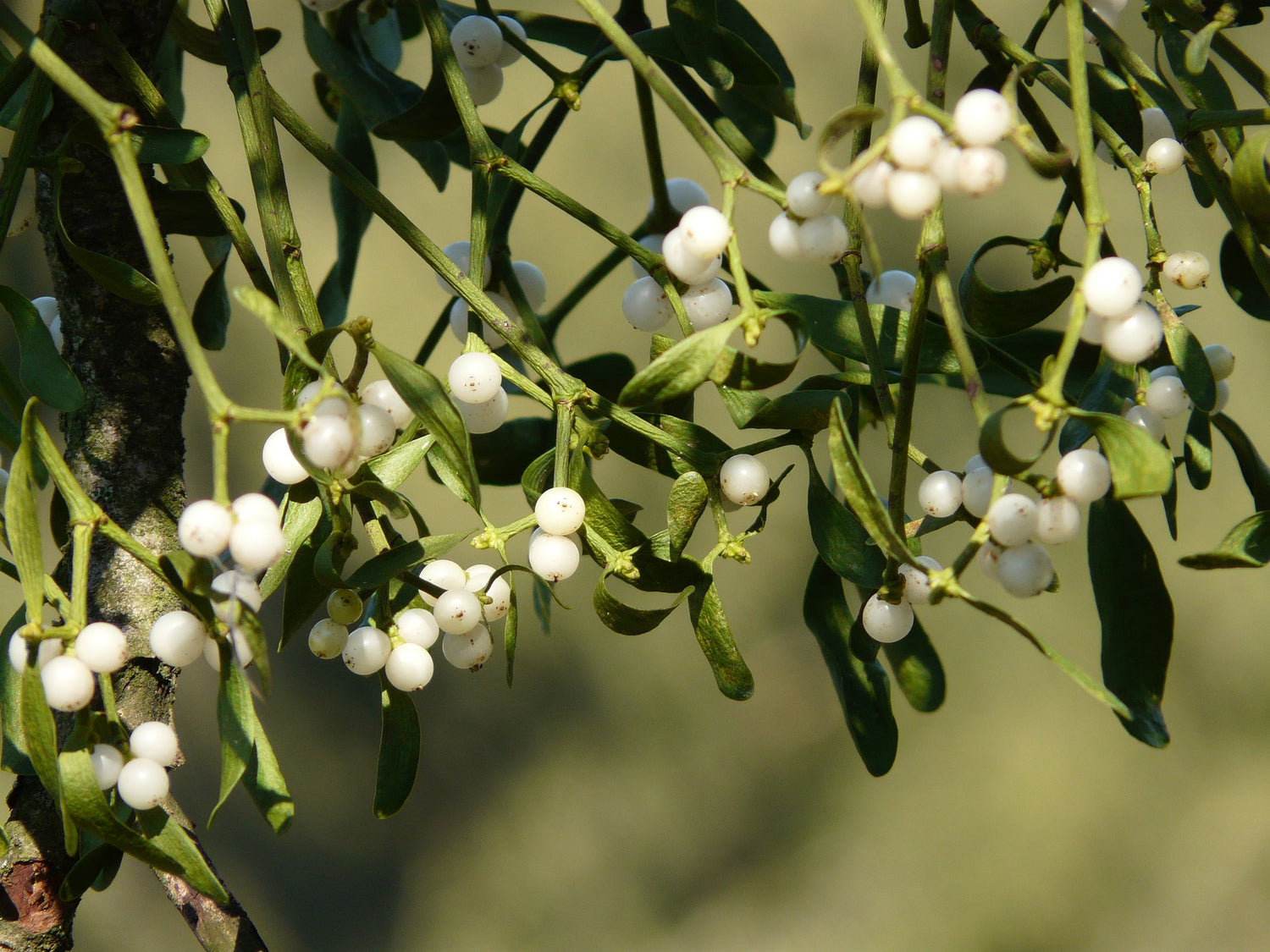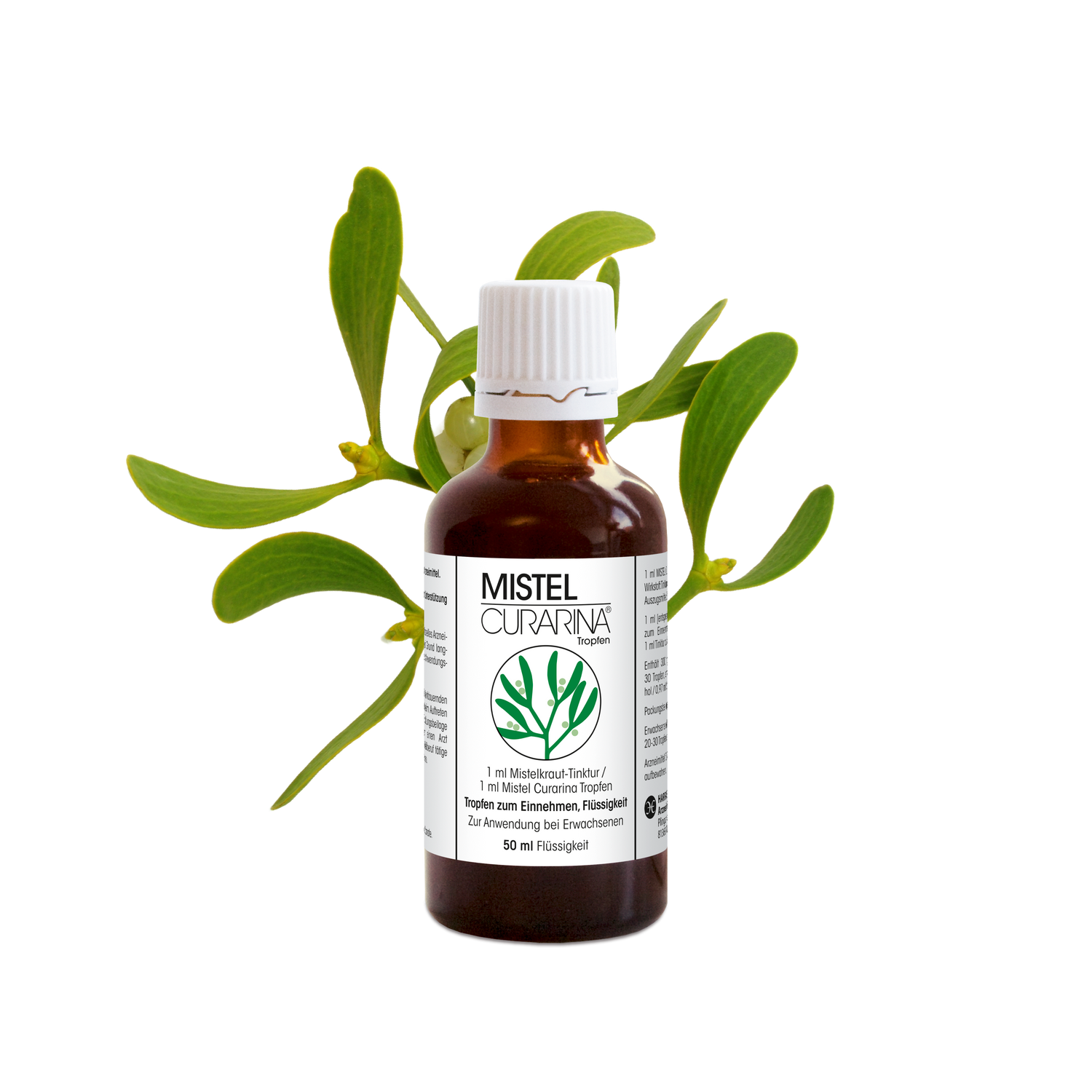
mistletoe
Since ancient times, people have known mistletoe (botanical name: Viscum album) as a medicinal, cult, and magical plant . Mistletoe grows parasitically, primarily on deciduous trees.
The distribution area is the mild winter regions of southern Scandinavia as well as central and southern Europe.
Celtic Druids once revered mistletoe as the most sacred of all plants; they saw it as a sign of the presence of the gods in the trees.
Mistletoe is still considered a lucky charm and a symbol of fertility. Its strength-boosting properties were an indispensable ingredient in medicinal herbal preparations. Modern scientific research confirms many of these experiences.
Mistletoe is used in naturopathy to support circulatory function , for example, in cases of dizziness and arteriosclerotic complaints . Mistletoe also has blood pressure-regulating effects . Because of its typically gentle and gradual effects, continuous and long-term use is recommended. The circulatory-activating effect results from the sum of the individual effects of various active ingredients.


